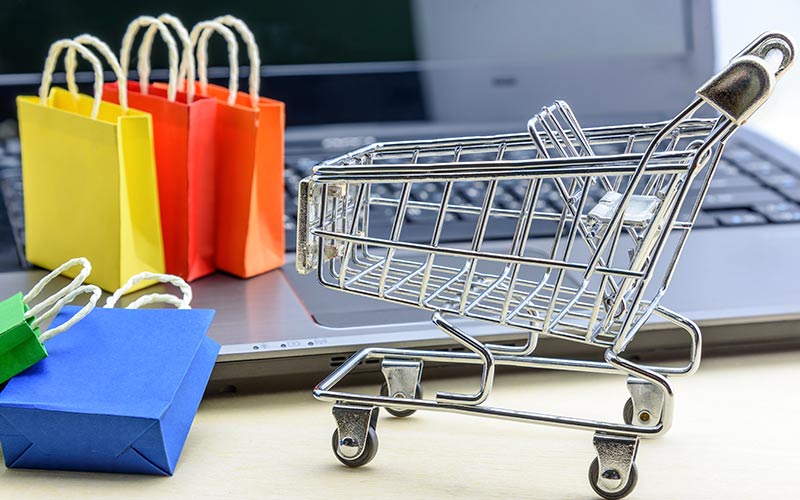
Insights
- Consumer packaged goods (CPG) companies have long been strong in areas like product innovation, production, and traditional retail.
- Yet, many are now struggling to keep pace with the demands of digital commerce and next-generation operations.
- Turning to external partners for e-commerce technology and execution can help bridge these gaps.
- This approach can deliver benefits such as reduced costs and accelerated market entry.

Beyond the Salon: Reinventing B2B Beauty Commerce with Wella's Romolo Ganzerli
The strategic advantage: CPGs outsourcing e-commerce technology and operations.
With the ongoing evolution of e-commerce, brands are under pressure to rethink both their technological capabilities and operational approaches. Global e-commerce sales are expected to increase from $5 trillion in 2022 to $8 trillion by 2028, driving a shift in how CPG brands connect with consumers.
Previously, e-commerce for CPGs boiled down to selling in online marketplaces. Now, CPG companies have to juggle multiple retail channels, such as social commerce, direct-to-consumer (D2C) and buy-online-pick-up in-store (BOPIS), creating new challenges for these companies.
To deal with this increasingly complex digital landscape, CPG companies are turning to outsourcing both their e-commerce technology infrastructure and key operational functions, with the aim of balancing capability building with cost management while maintaining competitive advantage.
The current situation
CPG companies have traditionally excelled in product development, manufacturing, and conventional retail distribution. However, many now face significant capability gaps in digital commerce and modern operations. In a recent study, CPG executives acknowledged gaps in key capabilities needed to thrive in digital commerce — with 74% rating their companies’ performance as only “basic” to “average.”
The pandemic fast-tracked the digital shift, driving rapid growth in e-commerce adoption. This acceleration created technological and operational urgencies that many CPG companies weren't prepared to address internally.
D2C channels have become particularly important. In the US, it was estimated that established brands generated around $135 billion in D2C e-commerce sales in 2023. This figure is expected to touch $187 billion this year. This rapid channel expansion requires not only appropriate technology stacks but also agile operational capabilities that can adapt to fluctuating demand patterns and consumer expectations for rapid delivery.
Research has shown that while flexibility and scalability are the biggest advantages of CPGs outsourcing, logistics services, cost savings, speed-to-value and access to expertise were also significant benefits. In addition, with the rapid advancements of artificial intelligence (AI) and generative AI platforms, CPG companies struggle to keep pace with these emerging technologies and are unsure if their spending is generating value.
The pandemic fast-tracked the digital shift, driving rapid growth in e-commerce adoption. This acceleration created technological and operational urgencies that many CPG companies weren't prepared to address internally.
Complications galore
Despite recognizing the necessity for digital and operational transformation, CPG companies face multiple obstacles when implementing these changes.
There are technology complications — e-commerce systems must seamlessly connect with existing enterprise systems, including enterprise resource planning (ERP), customer relationship management (CRM), and supply chain management. CPG companies struggle with integration hurdles when implementing new e-commerce technologies, with challenges ranging from integrating older technology with modern architectures and issues with data.
Despite recognizing the necessity for digital and operational transformation, CPG companies face multiple obstacles when implementing these changes.
The rise of omnichannel retail has created intricate fulfillment requirements that many CPG companies struggle to manage internally, as it is difficult to balance inventory across multiple channels while minimizing carrying costs, that is, costs that a business incurs for storing and maintaining inventory over time. This is particularly challenging during peak periods, such as holiday seasons.
A further challenge is the high costs of maintaining and updating internally-run e-commerce platforms and operational systems. This is often exacerbated by independent software vendors sunsetting their older platform versions and enforcing migration to newer versions, leading to migration expenses and rising licensing costs.
Talent is also an issue: There is a gap in technical expertise, as the specialized knowledge required for modern e-commerce platforms extends beyond traditional IT departments. And building in-house capabilities takes time, which most companies cannot afford in the competitive digital marketplace.

The outsourcing advantage
Outsourcing e-commerce technology and operations offers several advantages: External vendors can assume responsibility for technology performance and operational execution, for example, while potentially offering cost savings and faster time to market for CPGs. External service partners also assume responsibility for security and compliance.
Other benefits include the service partners’ specialized teams with experience across multiple implementations to make up for any talent gaps in the CPG companies, as well as their ability to use prebuilt components and established methodologies to reduce time to market. They also continuously evolve their platforms based on industry best practices, while moving to cloud-based solutions means CPGs can benefit from elastic capacity that scales with demand.
Outsourced operations convert fixed costs to variable costs that scale with business volume. CPG companies using outsourced fulfillment services can also reduce transportation-related costs.
Since D2C shipping is often beyond the traditional capabilities of many CPG companies, having the service partner manage the ecosystem with third-party providers means the client can focus on their core strengths — a benefit cited by 38% of respondents in a study.
In addition, service partners can help CPGs deploy new technologies, such as AI and generative AI, for both consumer experience and operational efficiencies.
While outsourcing is associated with some downsides – loss of control, difficulty in zeroing in on a vendor, data protection concerns, timeliness of delivery, and unsureness about the quality of the service being outsourced — the advantages outnumber them. Also, CPG companies can solve these shortcomings with careful planning.

The outsourcing game plan
To maximize the benefits of outsourcing both e-commerce technology and operations, CPG companies should consider these strategic approaches:
Choose the right partner: CPGs should choose service partners with specific CPG industry experience who can help them deliver higher engagement and conversion rates. In 2021, CVS Health wanted to evolve from a traditional pharmacy chain into a comprehensive healthcare services provider to enhancing care delivery and respond effectively to the pandemic. It turned to strategic outsourcing to offload non-core functions such as IT support and administrative tasks, enabling optimized operations, and better customer experience. This also allowed the company to focus on key priorities like expanding in-store clinics, scaling telehealth offerings, and delivering more personalized patient care. Streamlining operations led to lower costs and more efficient service delivery.
Outcome-oriented contracting: Structure agreements around business outcomes rather than technical specifications or operational processes so that the CPG’s business goals are as important for the vendor as for the client. This helps focus on objectives beyond the delivery of a tech implementation. When service partners are paid based on the outcome they’re delivering, it not only puts the responsibility of the performance on them but also ensures that the outcomes are favorable and aligned to the business goals of the CPGs, and the service is not just limited to the delivery of a tech implementation.
The Chinese marketplace Alibaba needed skills that were not available in the region and looked to outsourcing partners for the US-based web development expertise it required. This allowed Alibaba to access a broader talent pool, elevate quality standards, and focus more intently on their core business.

Focus on seamless integration: As omnichannel retailers retain 90% more customers than single-channel stores, companies need to prioritize solutions that offer a uniform and consistently good customer experience across channels and operational touchpoints. Ensuring that analytics capabilities are embedded provides insights into what customers prefer regarding products, payment gateways, retail channels and so on, and drives personalization and operational optimization. AI-powered predictive analytics and forecasting improve inventory positioning and reduce stockouts.
An online apparel brand saw significant gains after outsourcing its digital marketing to expert partners, achieving a 60% rise in website traffic and a 45% increase in sales during peak seasons. The specialized team drove these results by executing targeted campaigns, optimizing advertising spend, and delivering real-time analytics to continuously fine-tune strategies.
Maintaining ownership of customer data, product strategy, and brand experience while outsourcing technical and operational execution allows the CPG company to monitor the quality of the services being delivered and manage any risks that emerge, such as service disruptions or data breaches.
The bottom line
For CPG companies navigating digital transformation, strategic outsourcing of both e-commerce technology and key operational functions represents a balanced approach to achieving digital capabilities while managing costs and risks. As digital channels continue to grow in importance, the decisions about building versus buying capabilities become increasingly consequential across technology and operations.




